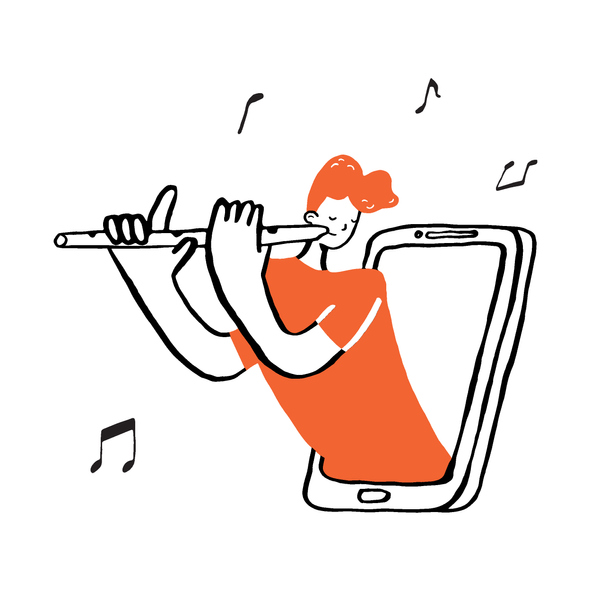Music education became instrumental in students’ psychosocial development and emotional health.
From the beginning of the confinement until today, when routines are resuming with more activities outside the home, mental health has stood out as a critical issue for heads of families, teachers, and students. Art education is one of the fundamental resources that appeals directly to emotional and mental health care.
Among the general benefits of music education are the improvement of memorization, hand-eye coordination, the forming of study discipline, and the improvement of mental processes for problem-solving. It also positively influences language development and creative abilities.
During the pandemic, music education also became instrumental in reinforcing children’s socio-emotional development and offered a semblance of normalcy during confinement and re-integration. That said, it should be pointed out that face-to-face environments present more risk than home activities because the mouth particles released by singing and playing wind instruments can contribute to the spread of Covid-19 through the air. What options has music education considered to stay current and safe?
When the keyboard is also an instrument
The online modality was critical for music education to continue when schools closed. However, this did not happen without its challenges. Comparing face-to-face musical education with what can be administered online is almost pointless. Teachers and students rely on nonverbal information for effective educational experiences. Instructions on the screen regarding placing fingers on a guitar’s bridge or breathing to reach or hold a note cannot be conveyed with the same precision as presential accompaniment.
However, music programs created during the pandemic found other avenues to address music practice and learning. One of the most limiting didactic factors is that students do not have the same access to instruments at home as at school. An article in The Conversation mentions exciting options for continuing musical education with no instrument other than the computer.
Through apps such as Incredibox, students can learn about composition and rhythm with beatboxing and special effects. It is also possible to try opera. Blob Opera is a machine learning model in which children and adults can experiment with various vocal tones and construct choral coordinations worthy of an international opera. Both applications are examples of employing music didactics without requiring an investment from the school. They make them good options for institutions with meager budgets or harmed by the pandemic.
More than any program or resource, the primary reason music education continued and survived has been the teachers, who, on many occasions, adapted quickly to technical challenges such as lack of equipment and connectivity problems. Like the teachers of other subjects, they remained creative, flexible, and, above all, patient in confronting challenges and obstacles to help their students during confinement. That creativity has positively impacted the way music will be taught in the future.
Have you used any online resources instead of instruments in your music lessons? What experiences have you had? Would you still use them along with face-to-face resources? Let us know in the comments.
Translation by Daniel Wetta
This article from Observatory of the Institute for the Future of Education may be shared under the terms of the license CC BY-NC-SA 4.0 
)
)


)